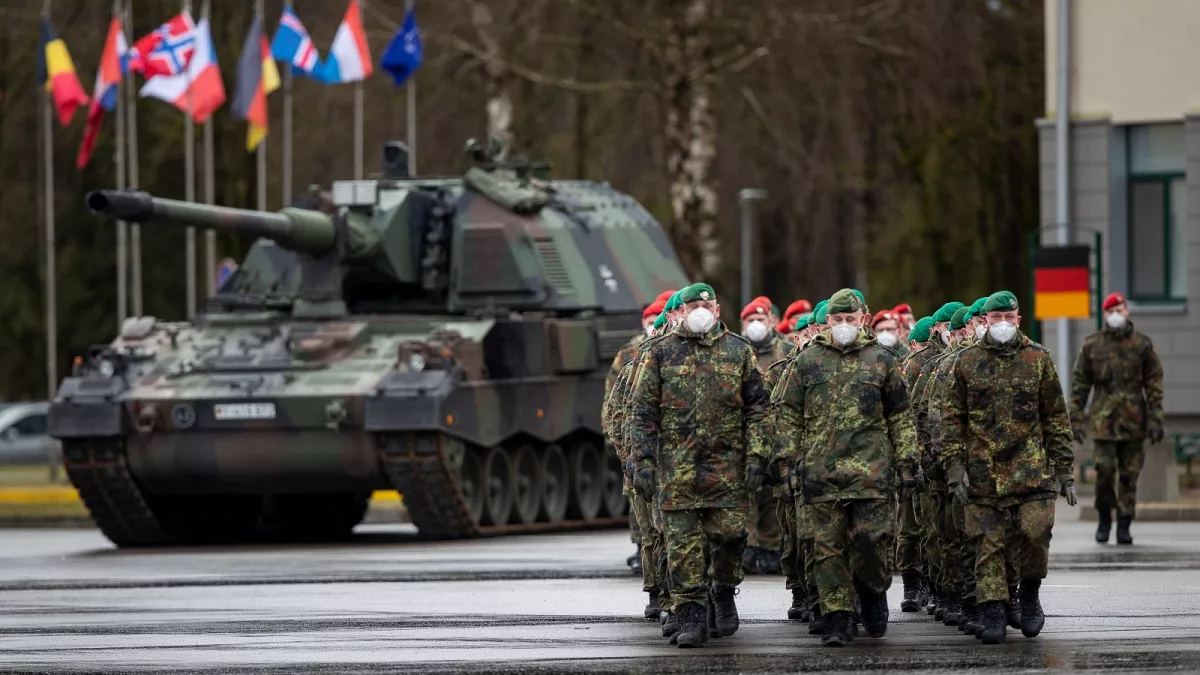News
US Tells European Nations to Step Up on NATO Defence Spending

Pete Hegseth, the new US Defence Secretary, has called on European nations to take on the majority of funding for Ukraine, signalling a significant change in America’s approach to the ongoing conflict and NATO.
Speaking at a defence summit in Brussels, Hegseth stressed that the US would no longer accept an uneven distribution of responsibilities with its allies and urged NATO countries to increase their defence spending.
Hegseth also stated it is “unrealistic” for Ukraine to reclaim its pre-2014 borders and voiced doubts about Ukraine’s potential NATO membership in the future.
His remarks, the clearest yet on the Trump administration’s stance, come as Donald Trump and Vladimir Putin agreed in a phone call to begin talks aimed at resolving the war.
These statements are likely to disappoint Ukrainian leaders, who have long sought NATO membership and resisted any peace deal that involves ceding territory. However, the comments are expected to be well-received by Moscow.
Hegseth hinted that the US might scale back its support for Ukraine, emphasizing that Europe should now take on the “overwhelming share” of aid. He made this clear while speaking at the Ukraine Defence Contact Group meeting, which included representatives from over 40 nations supporting Ukraine.
“We share your goal of a sovereign and prosperous Ukraine,” Hegseth said. “But we have to acknowledge that returning to Ukraine’s pre-2014 borders is not a realistic goal. Pursuing this will only extend the conflict and bring more suffering.”
In 2014, Russia annexed Crimea and supported pro-Russian separatists in eastern Ukraine. Currently, Moscow controls about 20% of Ukraine’s territory, particularly in the east and south.
Hegseth suggested that a lasting peace would require “strong security guarantees” to prevent further hostilities, but he ruled out NATO membership as part of any agreement. He proposed that peacekeeping forces, including European and non-European troops, could play a role, but such efforts should not involve NATO or fall under its mutual defence commitments.
“NATO’s European members must take the lead in ensuring the continent’s security,” Hegseth added. “Europe must provide the majority of both lethal and non-lethal aid to Ukraine going forward.”
Under previous administrations, the US was Ukraine’s largest military and financial backer. However, Trump has been critical of spending on foreign aid and has prioritized ending the war. Hegseth echoed Trump’s call for NATO allies to increase their defence spending to 5% of GDP, a sharp rise from the current 2% target.
Currently, the US allocates about 3.4% of its GDP to defence, while the UK spends roughly 2.3%. Nations close to Russia, like Poland and the Baltic states, already spend around 4%.
Meanwhile, Ukraine’s President Volodymyr Zelensky has expressed a willingness to negotiate peace from a “position of strength.” In a recent interview, he suggested the possibility of a territory exchange with Russia as part of a potential agreement.
Zelensky has also sought to win Trump’s support by offering American companies contracts to help rebuild Ukraine. However, critics argue that Trump’s close relationship with Putin could lead to concessions that weaken Ukraine and threaten European security.
It remains uncertain if a peace deal acceptable to both sides can be reached in the near future.
Meanwhile, Donald Trump has taken another shot at Trudeau over its NATO spending, calling the country the worst among all member nations. He argued that Canada’s defence spending falls well short of the target set by NATO, which is 2% of GDP.
Currently, Canada spends around 1.37%. Trump claimed this shows a lack of commitment to collective defence and accused Canada of relying on other nations, like the U.S., to pick up the slack. He even questioned Prime Minister Justin Trudeau’s priorities when it comes to national defence.
These remarks, made during a recent event, have reignited discussions about whether Canada is doing enough to meet its obligations. Critics within Canada argue the country should spend more, especially as global security concerns grow.
Others believe the spending level reflects Canada’s focus on diplomacy over heavy military investments. Regardless, Canada’s contribution to NATO remains under the spotlight, as the debate on defence spending continues to heat up.
